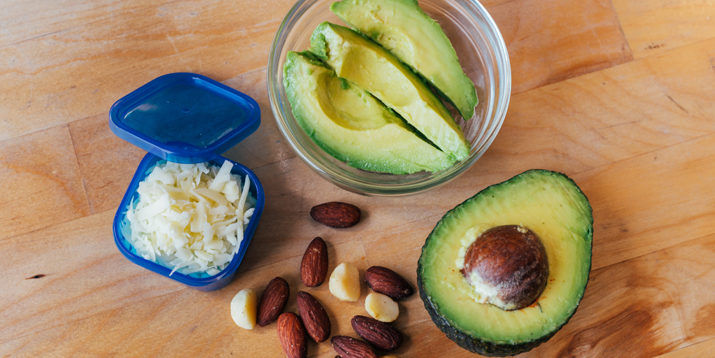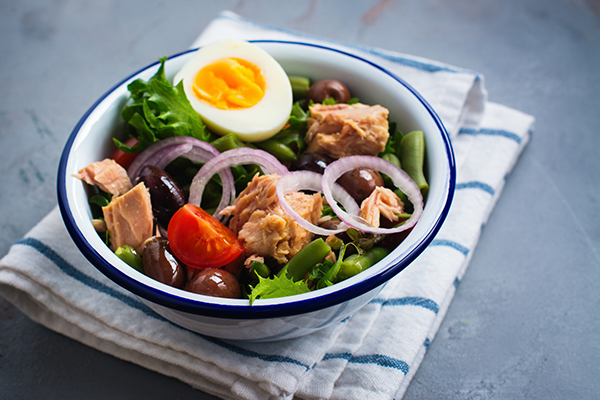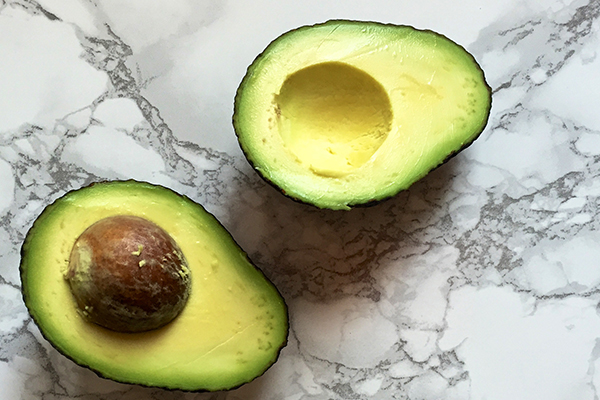Should You Count Macros for Weight Loss?

The Ultimate BODi Guide to Weight Loss
Can’t Lose Weight? | How to Start | Make It Easier | What to Eat |
Weight-Loss Workouts | Maintain My Weight
You’ve probably heard about counting macros as a weight loss strategy. Instead of simply slashing your calorie intake, you aim to eat a specific balance of macronutrients each day.
Some bodybuilders swear it’s the key to getting a cut physique, and the hashtag #IIFYM — “if it fits your macros” — appears more than 10 million times on Instagram. But will counting macros actually lead to the weight loss you’re hoping for?
Here’s what you need to know.
What Are Macros?

“Macros” is a cute nickname for the macronutrients — carbohydrates, fat, and protein — that provide you with the calories you need each day.
Calories, of course, play a starring role in weight loss — but there’s more to weight loss than just cutting calories. Food quality matters, so you want to get those calories from minimally-processed foods like fruits, veggies, whole grains, healthy fats, and lean protein.
People who swear by counting macros for weight loss will tell you that macros give you a better picture of diet quality — but that’s only partly true. Like calories, macros paint an incomplete picture of diet quality. You can meet your macronutrient balance goals perfectly and still be eating a crappy diet.
For example, say you’re aiming to get 40 percent of your daily calories from carbohydrates. You can hit that goal by eating fruit, veggies, whole grains, and legumes — but you can also hit that goal by eating cupcakes and candy.
That’s the idea behind counting macros — anything goes, “if it fits your macros.” And if you’re someone who struggles with cravings, that can be pretty appealing. But needless to say, you shouldn’t be getting the bulk of your fat and carbs from Oreos and French fries, which don’t provide important micronutrients — even if they fit your macros.
But you can count macros in a healthy way.
How to Count Macros for Beginners

Here’s a four-step game plan that can help to demystify counting macros for weight loss.
1. Figure out your daily calorie needs
Using the National Institute of Health’s Body Weight Planner, you can estimate your daily calorie target based on the following factors:
- Age
- Size
- Activity level
- Goal weight
2. Set a macro “budget”
How you budget your macros depends on your objective(s) — such as gaining muscle mass or losing weight — and the acceptable macronutrient range can vary widely.
Our recommended macro ratio for weight loss is a moderate split:
- 40 percent carbs
- 30 percent protein
- 30 percent fat
This makes room for healthy dietary fats like avocado, fatty fish, nuts, and seeds.
3. Crunch the numbers
OK, you’ve got a bunch of percentages — now what?
First, convert the recommended breakdown of macronutrients into the number of calories that should come from each. For example, if you eat 2,000 calories per day, then you would aim for:
- 800 calories from carbohydrates (40 percent)
- 600 calories from protein (30 percent)
- 600 calories from fat (30 percent)
Next, you’ll want to convert those numbers into grams, to make things easier when you’re reading nutrition labels. Protein and carbohydrates are 4 calories per gram, and fat is 9 calories per gram.
So, divide your total calories from carbohydrates and protein calories by four, and divide your fat calories by nine, to get their respective gram counts. For a 2,000-calories diet, that would be:
- 200 grams of carbohydrates
- 150 grams of protein
- 67 grams of fat
4. Track your macros
Track the fat, protein, and carbohydrate content of every food you put in your mouth — either in a bullet journal or using a macro-tracking app, like MyFitnessPal.
Phew! And, that’s it… until you hit a weight-loss plateau. In which case, you may need to start back at step one to readjust your macros if what you’ve calculated no longer does the trick.
You can also apply these three steps to any macronutrient-focused diet including the keto diet and Atkins diet. The question you’ve gotta ask yourself is: Do you really wanna?
Of course, you could instead follow the Ultimate Portion Fix nutrition plan, which does all of these calculations for you.
With the exception of a pretty simple equation to identify the ideal daily calorie range for you to lose weight (based on your overall daily activity and exercise program), you simply choose appropriate foods that fit into the color-coded portion containers and teaspoons, and you’ll eat within the program’s recommended daily macro breakdown.
Will Counting Macros Lead to Weight Loss?

It can lead to weight loss because calories are already accounted for when you count your macros. So, if you follow your macro plan to a tee, this will also mean that you’re creating a calorie deficit — and that’s where weight loss comes from.
But, again, you’ll want to make sure those macros come from mostly whole foods, such as fruits, vegetables, whole grains, and lean meats, so you’re getting all the essential nutrients you need. And counting macros can be tedious, so before you commit, you have to ask yourself if it’ll be sustainable and aligned with the type of lifestyle you want to live.
Can You Lose Weight Without Counting Macros?
Absolutely. Calorie and macro counting are only as good as your honesty, vigilance, and/or exactitude.
How faithfully do you follow the plan, and do you track everything? A major barrier to accurate tracking is portion control, so why not cut out the middleman? You can do this by learning how to properly portion your food.
Years of massive Costco-sized muffins, extra-large pizzas, and Big Gulps have distorted what we believe is a “proper” portion size. Even those of us who claim to eat healthy tend to eat more than our fair share.
If this is you, try BODi’s Portion-Control Containers to help you visualize the ideal-for-weight-loss portions of whole grains, fruits, veggies, protein, and fats. You’ll enjoy healthy, delicious food in the right amounts so you can lose weight without crunching numbers.
Happy eating!
Can Exercise Help You Lose Weight?

